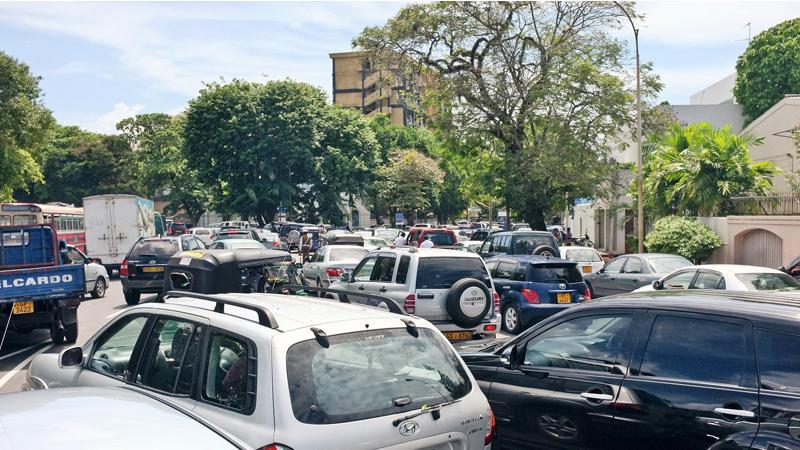
Politics apart, the apathy on the part of the authorities could be attributed to the traffic congestion, especially, in Colombo and its suburbs. Precious man hours are lost on irrelevant issues such as, political discussions in the workplace, when human capital could be better utilized to develop the economy.
It is no exaggeration that it takes at least 2 ½ hours for one to travel 20 kilometres to reach his Colombo workplace and 2 ½ – 3 hours to return home in the evening. The situation is further aggravated when roads are temporarily closed for repairs. Road expansion and imposing heavy duties to minimize vehicle imports alone are not sufficient to tackle the increasing congestion on roads.
Instead, systems devised by the technologically advanced countries need to be adopted to suit our conditions. There can be no standard model applicable to all cities. What is good for Colombo cannot be applied to Moneragala or Ampara. Hence, it is time to explore fool-proof systems to meet the challenges of time. Without solely depending on foreign experts, local professional expertise could be tapped to solve our domestic problems.
Short-term solutions
* Special training for police officers
Rather than curtail traffic congestion, the deployment of the traffic police has brought no relief for no fault of the police, but the lack of appropriate training. Loss of precious man-hours is the net result. The desired training for the police needs to be area-specific.
* Enforcement of traffic laws has to be flexible to suit changing situations. Vehicles following a heavy vehicle or even a tractor on the roads are compelled to defy traffic laws and overtake. In such circumstances, the traffic police rather than punish the offenders, should stop or order the driver of the heavy vehicle or tractor to take it to a side and permit other vehicles to proceed, thus putting an end to a long traffic jam. The Kadugannawa hill-top and the road beyond Kosgama on the Avissawella – Colombo road are classic examples.
* Regulating the operation of three-wheels and motorcycles:
The haphazard manner in which three wheelers and motorcycles are driven on the road often create chaos. The undisciplined behaviour on the part of the driver whatever the vehicle is, further complicates the problem. The practice always resorted to by three wheel drivers ahead of other vehicles is to stop the engine of their vehicle at colour light points and reactivate when signals are on again. This aggravates the situation and is a waste of time for others.
*Controlling the entry of lightweight vehicles to the city:
Enforce a rule for such vehicles to ensure that their seats are fully occupied. Parking space for these vehicles is a must. There should also be an efficient taxi service within the city to enable these commuters to arrive at their destination on time.
* Installation of a modern colour lights system at city intersections.
The practice of traffic police manually controlling vehicular traffic at certain points, having switched off colour lights is far from satisfactory due to the lack of judgement on their part. Drivers could be diverted to alternative roads when there is heavy congestion at entry points or intersections by recourse to SMS, between 7-9 am and 4-6 p.m.
Drivers wilfully blocking the roads driving at snail-space due to competition with rival groups are another hazard.
* TV screens installed at certain locations could warn drivers to avoid traffic congestion ahead and use alternative roads.
Recommendations
* Two separate lanes for buses, and three-wheelers, motorcycles.
Minimize the entry of outside three-wheelers to cities by setting up a separate three-wheel service to operate within the city at cheaper fares.
Long-term training for three-wheel drivers and increasing the present minimum age limit for obtaining driving licences.
(The writer is the President of Private Sector Engineers’ Society).
